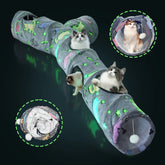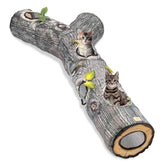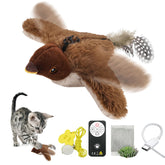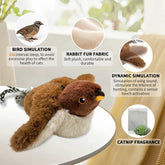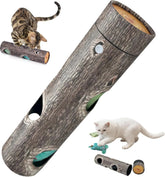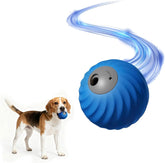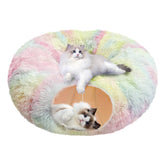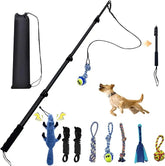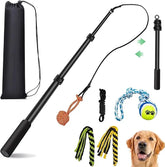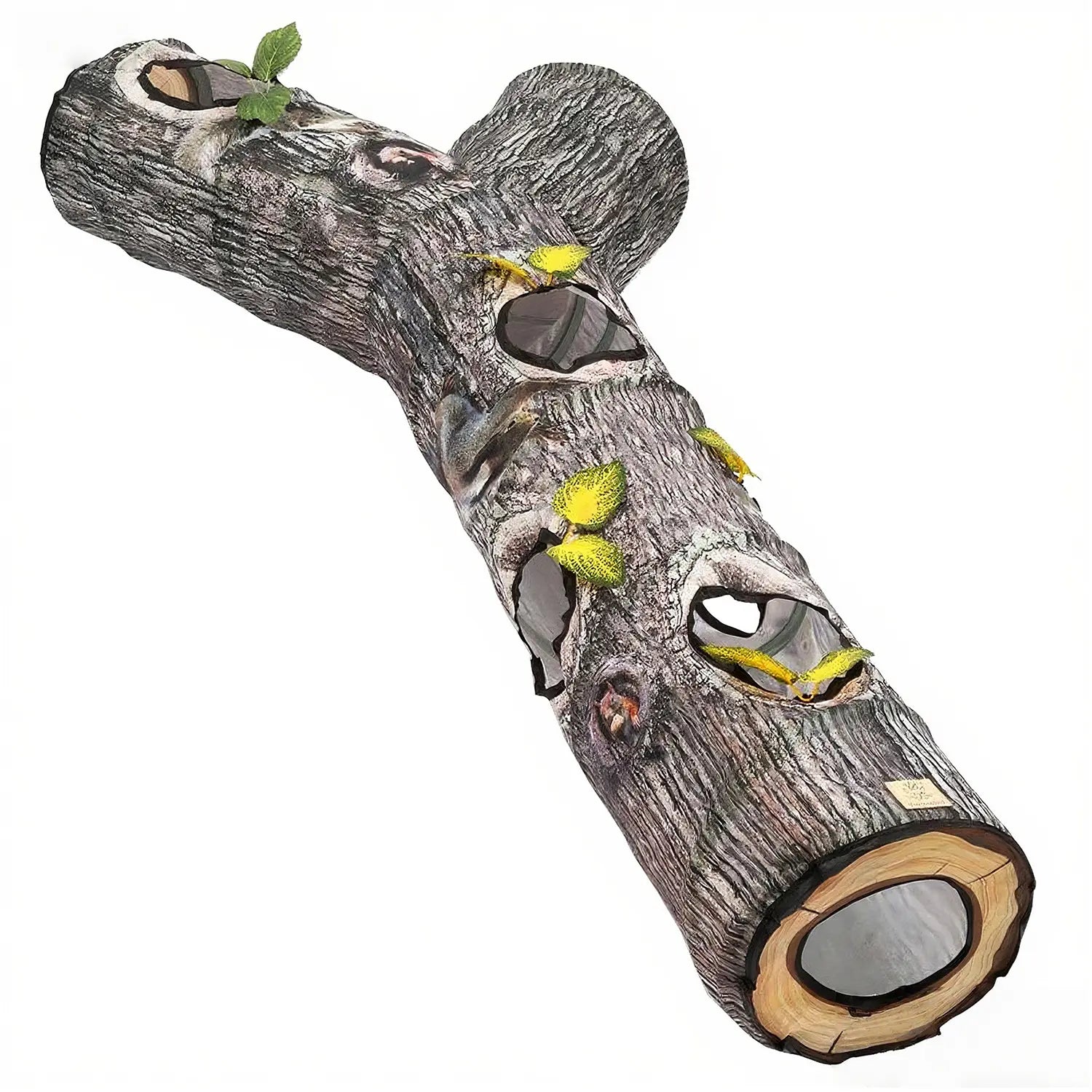Unleash the Herding Instinct: Why Your Dog Needs a Herding Ball & How to Choose the Right One
Does your dog endlessly circle the backyard? Nudge at your ankles during walks? Or show intense fascination with anything that moves? These behaviors might be more than just quirks—they could be signs of a deep-rooted herding instinct waiting for proper expression.
For breeds with herding in their DNA (like Border Collies, Australian Shepherds, Corgis, and many others), the drive to herd is as natural as breathing. Without appropriate outlets, this energy often manifests as problematic behaviors: obsessive circling, nipping at heels, or general restlessness. The solution isn't to suppress this instinct—it's to channel it appropriately.
What is a Herding Ball?
A herding ball is a large, durable ball specifically designed for dogs to push and herd with their noses and bodies. Unlike regular balls that are meant for fetching and chewing, herding balls are typically too large to pick up and are designed to withstand relentless pushing, nudging, and body-slamming.
The Benefits: More Than Just Exercise
Physical Exercise
Herding ball play provides tremendous cardiovascular exercise and helps build strength and endurance. The constant movement and direction changes work muscles throughout the body.
Mental Stimulation
This activity engages your dog's problem-solving skills as they figure out how to maneuver the ball. It satisfies their innate need for "work" and purpose, which is especially important for intelligent herding breeds.
Instinctual Fulfillment
Herding balls allow dogs to express their natural behaviors in a safe, appropriate way. This can significantly reduce anxiety, obsessive behaviors, and general restlessness.
Low-Impact Activity
Unlike jumping for frisbees or chasing balls, herding is primarily a ground-based activity that's easier on joints while still providing excellent exercise.
Introducing the FelRelWel Durable Herding Ball
After watching countless dogs struggle with inadequate toys that deflate, crack, or simply don't engage them properly, we designed the FelRelWel Durable Herding Ball with specific features that matter:
virtually Indestructible
Made from tough, non-toxic PVC material that can withstand even the most enthusiastic herders. The reinforced structure maintains its shape despite relentless pushing and nudging.
Perfect Size Options
Available in multiple sizes to suit different breeds. The ball is specifically sized to be too large to pick up but easy enough to maneuver with nose and paws.
Weather Resistant
Perfect for outdoor use year-round. Doesn't become waterlogged or damaged by sun exposure.
Smooth Surface
Specially designed to roll smoothly without damaging grass or hard surfaces, and gentle on your dog's nose.
Getting Started: Herding Ball Introduction
First Introduction
-
Place the ball on a flat surface and allow your dog to investigate
-
Some dogs immediately understand what to do, others may need encouragement
-
Gently roll the ball and encourage your dog to interact with it
Building Engagement
-
Use excited, encouraging language when your dog shows interest
-
Occasionally reward interaction with high-value treats
-
Keep initial sessions short (5-10 minutes) to prevent overexertion
Advanced Play
-
Once comfortable, encourage directional movement ("this way," "around")
-
Create simple obstacle courses for them to navigate the ball through
-
Use it as a reward after training sessions
Safety First: Herding Ball Best Practices
Supervision is Essential
Always monitor your dog during herding ball sessions to ensure safe play and prevent overexertion.
Proper Sizing Matters
Choose a size appropriate for your dog—large enough that they can't get their mouth around it, but not so large that they can't move it.
Surface Considerations
Grass or dirt surfaces are ideal. Avoid rough concrete that might cause abrasions on the ball or your dog's nose.
Hydration Breaks
Herding is intense exercise! Provide frequent water breaks, especially on warm days.
Know When to Stop
Watch for signs of exhaustion: excessive panting, slowing down, or lying down. Herding can be so engaging that dogs may not self-regulate.
Which Dogs Benefit Most?
Traditional Herding Breeds
Border Collies, Australian Shepherds, Corgis, Shetland Sheepdogs, and other herding breeds often show immediate understanding and enthusiasm for herding balls.
High-Energy Working Breeds
Siberian Huskies, German Shepherds, Belgian Malinois, and other high-drive breeds benefit from the physical and mental challenge.
Smart Dogs Who Need Jobs
Even mixed breeds with energy and intelligence often take to herding balls enthusiastically.
Dogs with Chase Instincts
Dogs who love to chase balls but shouldn't be jumping (due to joint issues) can satisfy their drive without the impact.
Beyond Exercise: The Transformative Impact
Owners of herding ball enthusiasts report remarkable changes:
"After just 20 minutes with his herding ball, my Border Collie is calm and content for hours. It's transformed our daily routine." - Mark, Colorado
"My Australian Shepherd used to herd my children constantly. The herding ball gave her an appropriate outlet for that energy." - Sarah, Oregon
"I've tried every toy for my high-energy Cattle Dog mix. This is the first thing that truly tires him out mentally and physically." - James, Texas
Your Herding Journey Starts Here
The FelRelWel Durable Herding Ball isn't just another toy—it's a key to unlocking your dog's natural potential while providing the exercise and mental stimulation they desperately need.
Ready to transform your dog's energy into productive play?
Discover the Perfect Herding Ball for Your Dog
Special Offer for Blog Readers: Use code HERD15 at checkout for 15% off your first herding ball.
Have questions about whether a herding ball is right for your dog? Leave them in the comments below!
